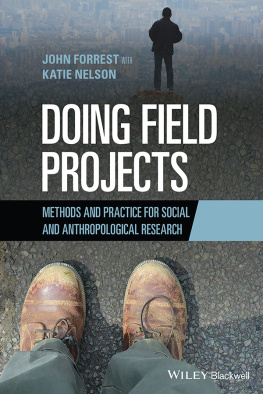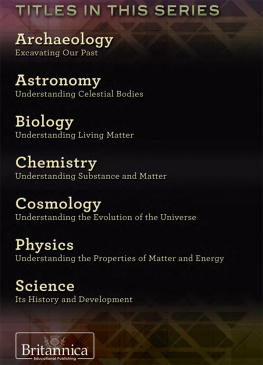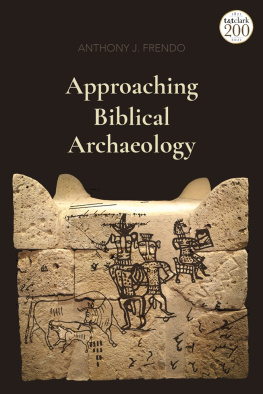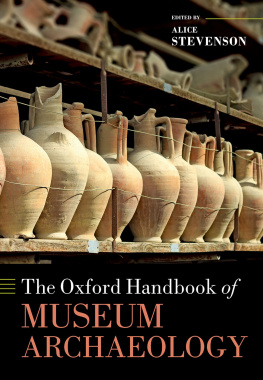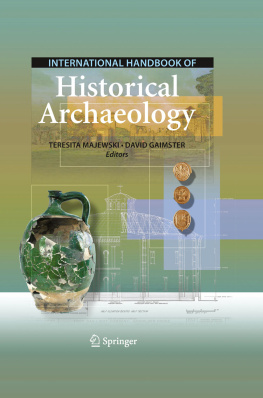
Praise for this second edition of The Archaeologists Field Handbook
This volume has become the standard for archaeological field training. A sensible and comprehensive guide to research design and practical techniques, with useful tips and advice from a wide range of professional archaeologists. A must for students, professionals and community groups.
MARTIN GIBBS, Professor of Archaeology, University of New England
This new version of the trusty Archaeologists Field Handbook is much changed from the first edition to reflect the changing nature of the profession, especially the kinds of data we collect and the digital ways in which we collect it. It is absolutely the go to field manual for archaeologists whatever their level within the profession.
JANE BALME, Associate Professor of Archaeology, University of Western Australia
Reviews of the first edition of The Archaeologists Field Handbook
The word comprehensive is an understatement when describing The Archaeologists Field Handbook. It covers almost every imaginable aspect of fieldwork in an easy to understand and well structured manner. This book will be invaluable for those just starting their archaeological career as well as seasoned field veterans.
TIM ORMSBY, Australian Archaeology
The Archaeologists Field Handbook should be compulsory reading for all Australasian archaeologists... As a compendium of collective wisdom and basic tools it provides a valuable review of things archaeologists should already know and a signpost for things we must continue to learn.
GREG JACKMAN, Australasian Historical Archaeology
An impressive tour de force. With this volume in their knapsacks, budding archaeologists and consultants wont need any other to undertake fieldwork in Australia.
JAY HALL, Head of Archaeology, University of Queensland
All in all, The Archaeologists Field Handbook is a most welcome, well done and comprehensive publication. [It]... will be useful to all archaeologists, and especially to students and those just starting out on a professional career path.
JAMIE REEVES, Archaeology in Oceania
This is like my bible... I never go into the field without it.
SIMON SANDALL, Readers Voice
Dedicated to John Mulvaney
In this book, the word Indigenous is used to indicate both Aboriginal and Torres Strait Islander peoples. The political autonomy of these peoples is indicated through the use of a capital I for Indigenous. We recognise the great diversity of these cultures. Aboriginal and Torres Strait Islander readers should be aware that this document may contain the images or names of people who have passed away.
This edition published in 2017
First published in 2004
Copyright Heather Burke, Michael Morrison and Claire Smith
All rights reserved. No part of this book may be reproduced or transmitted in any form or by any means, electronic or mechanical, including photocopying, recording or by any information storage and retrieval system, without prior permission in writing from the publisher. The Australian Copyright Act 1968 (the Act) allows a maximum of one chapter or 10 per cent of this book, whichever is the greater, to be photocopied by any educational institution for its educational purposes provided that the educational institution (or body that administers it) has given a remuneration notice to the Copyright Agency (Australia) under the Act.
Allen & Unwin
83 Alexander Street
Crows Nest NSW 2065
Australia
Phone: (61 2) 8425 0100
Email:
Web: www.allenandunwin.com
Cataloguing-in-Publication details are available from the National Library of Australia
www.trove.nla.gov.au
ISBN 9781743318065
eISBN 9781952535949
Index by Puddingburn Publishing Services
Set by Midland Typesetters, Australia
CONTENTS
TABLES
Heather Burke is an Associate Professor in the Department of Archaeology at Flinders University, and has many years experience as a consultant archaeologist. She has participated in and directed numerous surveys and excavations for historic, prehistoric and Aboriginal sites across Australia.
Michael Morrison is a Senior Lecturer in the Department of Archaeology at Flinders University. His research focuses on Indigenous archaeology in north-eastern Australia and he has worked with numerous Indigenous communities on heritage management projects, both in commercial settings and in the context of community-based Indigenous land and sea management programs. He has regularly taught courses in field and research methods, Indigenous archaeology and Indigenous heritage management at Flinders University.
Claire Smith is a Professor in the Department of Archaeology at Flinders University and a former President of the World Archaeological Congress. She is editor of the eleven-volume Encyclopedia of Global Archaeology. She specialises in rock art research and the analysis of symbolic communication, and has conducted research with the remote Aboriginal community of Barunga, Northern Territory, since 1990.
Since the first edition of this handbook was published in 2004 many aspects of Australian archaeological practice have changed. In many respects, this edition presents a new snapshot of the field, reflecting improved methods, changing legislation, new capacities in digital data capture, management and archiving, and more readily affordable technologies for surveying and photography. The archaeological employment landscape has also shifted radically over the past decade: as of 2013 more than half (52 per cent) of all archaeologists in Australia were working in the private sector as consultants, a quarter (25.3 per cent) were employed in universities, approximately 16 per cent occupied positions in government departments, and only 4 per cent worked in museums (Ulm et al. 2013: 37). More importantly, 59 per cent of professional archaeologists who responded to Ulm et al.s survey reported that they spent at least half their time engaged in cultural heritage management activitiesthe business of archaeology that is covered by this book.
Accordingly, we have almost completely rewritten this edition. One major change has been to restructure the chapters to focus on the different scales of recording and data management that are necessary across the life of a project, from the ethical and legal framework in which contemporary archaeological practice is set and the initial design and planning stages of a project, to the collection of landscape-, site- and artefact-level data. Thus, there is a greater focus on the management of a project from its inception, particularly in terms of data that are created digitally with no previous paper incarnation (born-digital data). Ten years ago born-digital data collection and management was only on the horizon of our concerns, but concepts of digital data and workflows and the importance of planning them from inception are becoming increasingly central to the operation of an effective project. The restructure of this book also has meant a greater focus on data with a spatial dimension, including both locational data (i.e. where things are) and spatial relationships between things (i.e. where something is in relation to something else). For example, an artefact has a spatial location that can be allocated a set of coordinates, but it also has a spatial relationship with other artefacts at that site; depending on that relationship it may be isolated from other artefacts or part of a cluster. At a broader level, that sites location has relationships with other sites, as well as other features in the physical environment. A considerable proportion of this book explains how to identify, record and analyse these kinds of spatial relationships.
Next page


